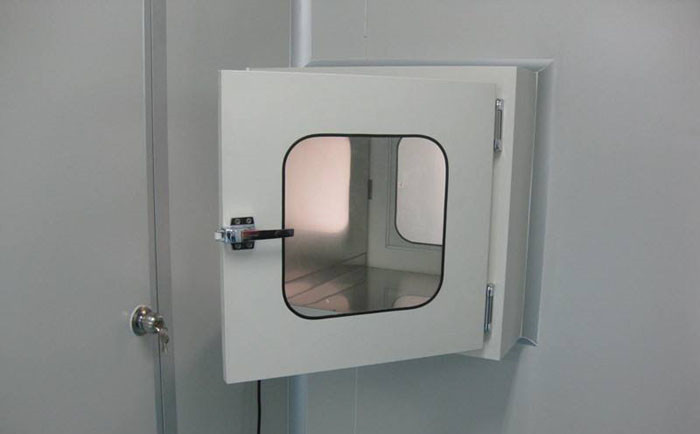
How to use cleanroom pass box?
A pass box plays a critical role in cleanroom environments by enabling the safe and controlled transfer of materials between areas of different cleanliness levels. However, improper use can easily compromise the integrity of the cleanroom, leading to contamination and operational issues.
In this guide, we’ll outline 7 key precautions and best practices to follow when using a pass box in a cleanroom. Whether you’re working in pharmaceutical manufacturing, electronics, or biotechnology, understanding these rules is essential to maintaining your cleanroom’s ISO standard.
1. Manage the Pass Box Based on the Higher-Level Clean Area
The cleanliness management of a pass box must follow the stricter standards of the two zones it connects. For example, if the pass box connects a general preparation area and a sterile filling room, the cleaning and operation procedures must adhere to the filling room’s standards.
2. Separate Personnel and Material Pathways
To avoid cross-contamination, cleanroom layouts must clearly separate personnel access from material flow. Materials should be transferred only through dedicated material channels and not via doors used by personnel.
3. Follow the “One Door Open at a Time” Rule
The most important operational rule for any cleanroom pass box is that only one door should be open at a time. This prevents airflow disruption and particle migration between rooms.
Correct procedure:
Open the outer door and place the material inside.
Close the outer door completely.
Then, open the inner door to retrieve the material.
Many pass boxes feature mechanical or electronic interlocks to enforce this protocol.
4. Prepare Materials Before Transfer
Raw and auxiliary materials should be unpacked or externally cleaned before entering the cleanroom via the pass box.
Packaging materials should have their outer packaging removed in a staging area before being transferred.
All material movements must be logged, and handover checks conducted by both sending and receiving personnel.
5. Sanitize the Pass Box After Use
After each transfer session—especially at the end of a shift—it’s essential to:
Wipe all interior surfaces of the pass box with approved disinfectants.
Turn on the UV germicidal lamp for at least 30 minutes if equipped.
Close both doors securely and log the cleaning activity.
This prevents buildup of bacteria or particles over time.

6. Use Separate Pass Boxes for Waste and Hazardous Items
Contaminated, hazardous, or high-risk materials should never be transported through the same pass box used for clean material. Instead, facilities should be equipped with dedicated waste pass boxes leading directly to non-clean zones.
7. Follow Exit Procedures When Moving Items Out
When moving materials or semi-finished products out of the cleanroom:
Transfer them first to a buffer station inside the clean area.
Then, pass them through the pass box using the reverse of the entry process.
Final products should be handled via separate logistics channels.
Final Thoughts
Using a pass box in a cleanroom may seem straightforward, but strict discipline is required to ensure compliance and cleanliness. By following these 7 essential guidelines, cleanroom operators can:
Prevent cross-contamination
Maintain ISO and GMP standards
Ensure the safety of products and processes
Remember: the pass box is not just a convenience—it’s a critical barrier against contamination. Make sure your team understands these rules and incorporates them into daily SOPs for a safer, cleaner production environment.

